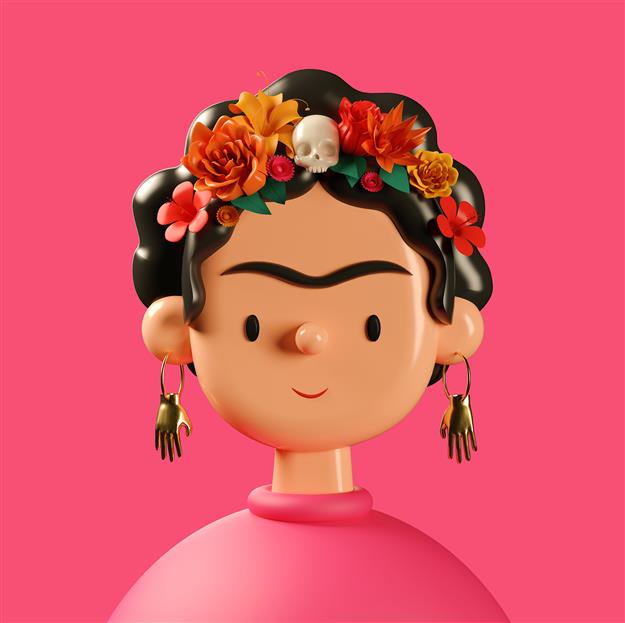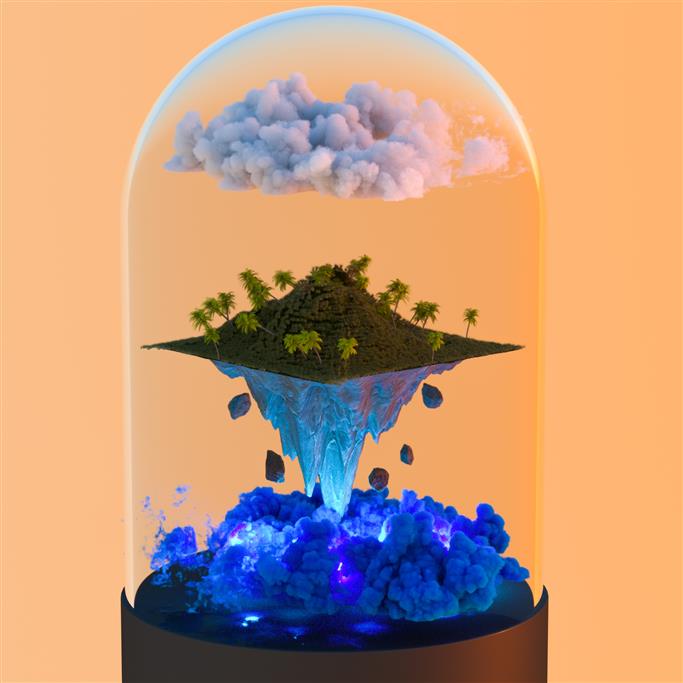
Amrit Pal Singh and (right) Gopi Krishan Ghosh.
Arushi Chaudhary
You’re scrolling through Instagram or browsing Behance when you come across a stunning piece of digitally rendered art. How much would you pay to own it? Strike that. Would you pay for it at all when you could just make it your own with a right click+save or a screengrab? That has been the fate of digital art for as long as it has existed, primarily because of the ease of duplication. But not anymore.
Today, digital art creations can be authenticated, verified and auctioned for millions of dollars. At the heart of this transformation is the up and coming space of crypto art.

The workings
Crypto art is a genre of digital art where each piece is linked to a Non-Fungible Token (NFT), a unique ID generated, shared and stored over blockchain. Whenever a digital art piece with an NFT is transacted — sold, bought or gifted — the details are time-stamped and updated on the blockchain.
Since blockchain is a distributed ledger, which means the data on a single chain is available on a string of connected computers rather than being saved on a central server, these transactions cannot be fudged or meddled with. These are authenticated only when the details on all connected systems tally.
Digital art pieces with NFTs can still be replicated just as easily, but these imitations cannot be passed off as originals. This lends an element of exclusivity to crypto art, turning them into collectibles, thus skyrocketing their value. Case in point: a digital compilation of images by an artist who goes by the name Beeple being sold for a jaw-dropping $69.3 million (Rs521 cr)! Similarly, a recreation of the popular Nyan Cat animation by artist Chris Torres to mark the 10th anniversary of the popular GIF fetched $600,000 (Rs4.5 cr) on Foundation, a popular crypto art platform.

Closer home
Digital artists in the country are capitalising on this paradigm shift in the art world. Delhi-based 3D illustrator and graphic designer Amrit Pal Singh ventured into the space of crypto art with a series called Toy Faces, which started as a means to create design assets for fellow artists in the form of stock images. The idea caught on well and brought Amrit global recognition.
That’s when he started doing customised toy faces, and his creations of Frida Kahlo and Vincent van Gogh received attention and admiration in equal measure. The pieces sold for 3.9 and 3.5 Ethereum, respectively. With 1 Ethereum priced at around Rs1.50 lakh, the appreciation in the value of his creations was far more than he could’ve ever hoped for with a non-NFT digital art piece.

When Daft Punk split earlier this year, Amrit created toy faces of both Thomas Bangalter and Guy-Manuel de Homem-Christo. “The two toy faces were part of a single creation. The idea was that fans could buy these toy faces together as a way of reuniting the two artists,” he says.The creation resonated with the interested buyers and a bidding war ensued, with both Daft Punk toy faces selling for 15 Ethereum. “The growing support for NFT is pushing the genre of digital art like never before. With more and more artists working with digital tools, it is turning into a movement that needs to be catalogued. NFTs are making that possible,” says Amrit.
Speaking of his initiation into crypto art, Ravi Vora, an international commercial director and photographer who hails from Mumbai and lives in Los Angeles, says this space is transforming art as we knew it. “I’ve always loved being on the cutting edge of art and finding the newest way to create and showcase my creativity. I fully entered the NFT space in February and the journey already feels like a reawakening of the creative child inside me, allowing me to pursue new mediums and tools that support my imagination. The bounds of the physical world are truly smashed as we paint and sculpt in pixels and data instead of acrylic or stone.” Ravi has so far sold more than 10 art pieces as NFTs.
Just like Ravi, Chennai-based artist Siraj Hassan also learnt about NFTs fairly recently and has already found a foothold in this medium. “I came to know about crypto art in October last and posted my first piece, an animation of a 3D printer, with NFT in December, which was sold within three weeks. Before this I had never even imagined that selling digital art online was a possibility.”
Crypto art has been a game changer for Siraj, whose series ‘Caged’, which captures themes such as yoga and mental health, has been exceptionally well-received on the NFT platform OpenSea. He now wants to transition to more exclusive, curated platforms like Maker’s Place, Super Rare or Known Origin to reach out to a more niche segment of buyers. “These platforms add an element of exclusivity that attracts people with a penchant for art collection, which means better prospects for artists.” To him, a chance to connect, collaborate and learn from fellow artists is an added advantage.
Agrees 20-year-old Gopi Krishan Ghosh. “To truly appreciate crypto art, one needs to look beyond the monetary aspect. The support you get from within the community of artists remains unparalleled in the real world,” says Gopi, who fell in love with 3D art at the age of 10. “I saw Kung Fu Panda, and felt inspired to create something equally magical. After dabbling with 3D art over the years, he started taking on freelance work and became a part of the Blender Artists Community. “That’s where I got to know about crypto art and got an invite to be a part of Foundation,” he says.
Gopi creates ‘cute animations’ with NFTs and sold his latest, ‘Inside the Rabbit Hole’, for 5.5 Eth. For a self-confessed nerd who grew up with no friends and spent most of his teen years mastering computer graphics, crypto art has been a turning point in life.
Pandemic fuelled the fire
While NFTs have been around since early 2010s, they seem to have erupted on the scene during the pandemic. According to the latest Art Market Report, the global lockdowns have caused the sale of art and antiques to shrivel up by 22 per cent in 2020. In this setting where every aspect of life has a virtual extension, the art world too has had a much-delayed digital transformation.
As Amrit Pal says, “The pandemic has played a big role in making people more receptive to the idea of digital art as being something worth collecting or investing in. The mindset that if you’re investing in an artistic creation it has to be in the physical realm is being broken.” Looking forward to releasing his creation with NFTs is Delhi-based Adhiraj Singh. He believes that the element of ‘scarcity through ownership is going to be revolutionary for digital artists’.
Join Whatsapp Channel of The Tribune for latest updates.



























